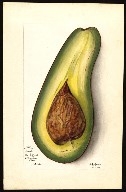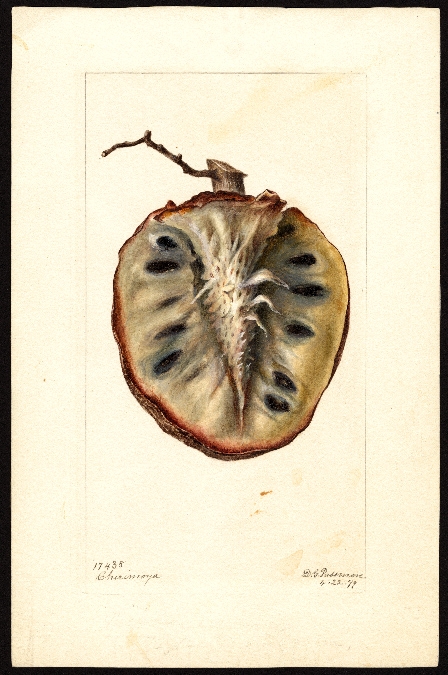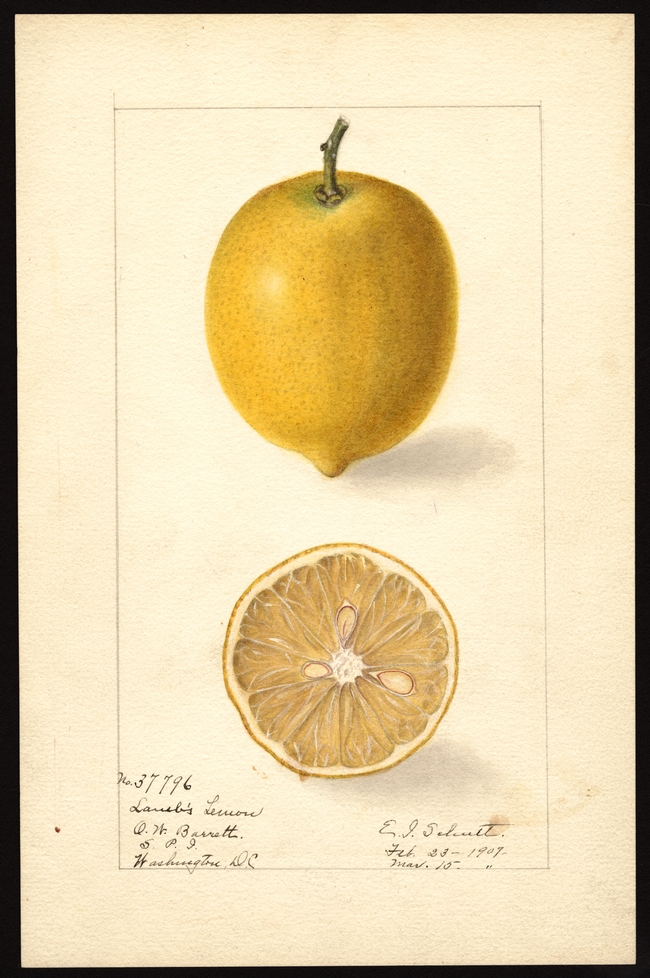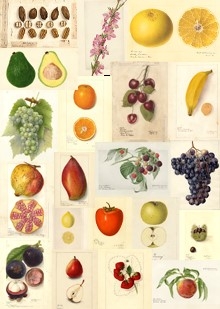There is culture in agriculture. Mary Lu Arpaia says she spent hours looking at the avocado pictures, along with those of other fruit crops.
The USDA Pomological Watercolor Collection is one of the most unique collections in the Rare and Special Collections of the National Agricultural Library (NAL). As a historic botanical resource, it documents new fruit and nut varieties, and specimens introduced by USDA plant explorers from the late 19th and early 20th centuries.
The collection spans the years 1886 to 1942. The majority of the paintings were created between 1894 and 1916. The plant specimens represented by these artworks originated in 29 countries and 51 states and territories in the U.S. There are 7,497 watercolor paintings, 87 line drawings, and 79 wax models created by approximately 21 artists.
Lithographs of the watercolor paintings were created to illustrate USDA bulletins, yearbooks, and other publications distributed to growers and gardeners across America.
Today, the collection is preserved in NAL's Rare and Special Collections, where it serves as an important research tool for a variety of users, including horticulturists, historians, artists, and publishers. In 2010 and 2011, the entire printed collection was digitized to improve public access to this valuable resource, and to better preserve the paintings by reducing the need for researchers to handle them. Today, the whole collections is searchable.
In 1886, the United States Department of Agriculture (USDA) established the Division of Pomology to oversee the collection and distribution of new varieties of fruits, and to disseminate information to fruit growers and breeders. USDA commissioned artists to create technically accurate illustrations of newly introduced cultivars for the division's publications. In 1887, William H. Prestele was appointed as the first artist for the Division of Pomology. Henry E. Van Deman, division chief, explained the importance of Prestele's appointment in his 1887 Report of the Pomologist:
Over the years, other artists were also assigned to the division and their watercolors were used for lithographic reproductions in USDA publications and as scientific documentation of research results. Although some of the watercolor paintings are not signed, we know of 21 artists (nine of whom were women) who contributed to this important resource.
Lamb's Lemon. Whatever happened to it?



